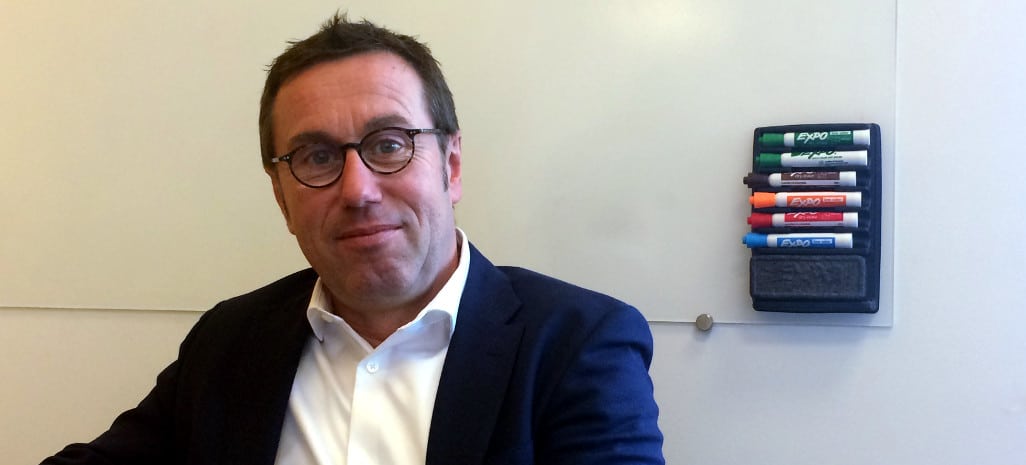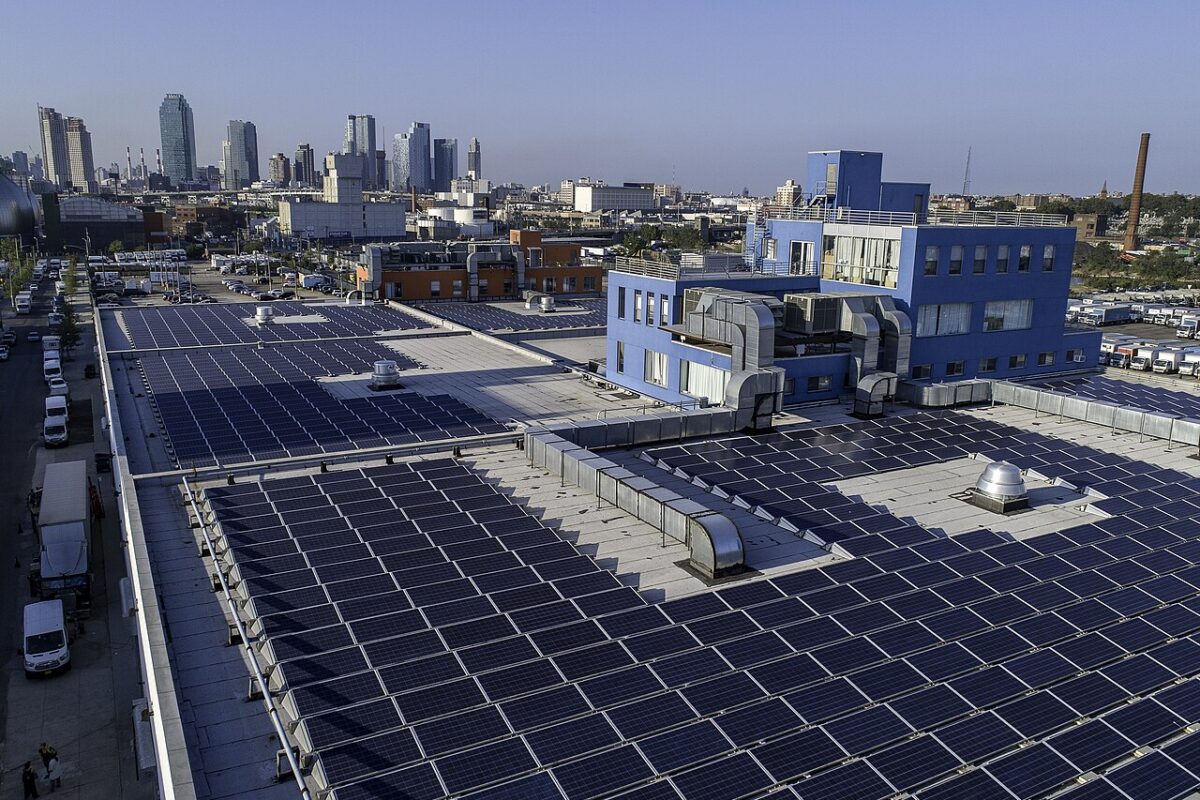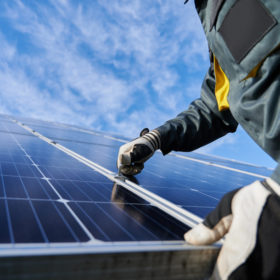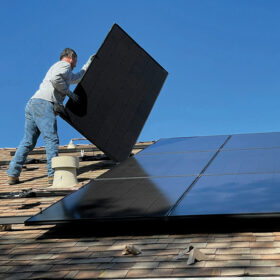pv magazine: SolarWorld has issued statements indicating that the trade remedies recommended by the ITC on October 31 will be inadequate to restore U.S. manufacturing. For those who missed that statement, can you sum up why you feel that none of the three proposals by the commissioners are sufficient, and why a solution like your company’s tariff-rate-quota proposal is necessary?
Jürgen Stein: First of all, we have to point out that the work of the Commission and its staff was extensive. They went into the details, and, we have to thank them for their work and their unanimous finding of injury to the U.S. solar cell and module manufacturing industry. They took this case and brought it to the level where we are, but we think their suggested remedies could be amplified in several points in order to ensure the long-term success of the U.S. industry.
In terms of the remedy findings of the Commission, all of the commissioners recommended a remedy and that it should be for a period of four years. Which shows that the injury to the industry is obviously quite substantial, and that we need the full four years of remedy for the recovery of the industry. So, we appreciate that all of the commissioners recognize that fact.
Three out of four commissioners recommend tariffs, and three out of four also said that the industry needs funding. These are helpful findings.
What maybe missed is that only a tariff is not sufficient. It addresses the price level to a certain point, but at a lower level, there is the high risk that the import prices will continue to fall so dramatically that at the end of the day the market price we see – even after the application of a lower-level tariff – is not very much different than today. We also need quotas.
We learned this lesson in the dumping cases against China and Taiwan. In those cases, we saw the industry suffer as a result of the dumping of product into the U.S. market, and then circumvention or underpricing of the dumping duty orders. So, we see a high risk that if there is only an ad valorem tariff, vs a per-watt tariff, that the foreign producers will have a manual to bring the goods into the United States on a price level which is again dumping. On the other hand, if there is only a tariff and no quota we are not addressing the other negative behavior of the foreign industry, namely, that overcapacities will continue to build regardless of global demand.
Thus, without a per watt tariff and a quota, the countries that produce the overcapacity will continue to do so. This is the reason that we proposed a per-watt tariff and a quota. We can address it differently with a minimum import price or a floor price, as our co-petitioner did, but you always need some combination of tariff and other remedy.
pv magazine: This is interesting about prices. The latest figures by Bloomberg New Energy Finance indicate that tier-1 Chinese PV makers were making solar panels at $0.32-0.37 per watt in Q3. Assuming that U.S. manufacturers get four years of trade protection, do you think that SolarWorld and other American PV makers will be able to compete with Chinese costs after this four-year period?
Stein: Yes – we will be competitive after four years of an effective safeguard remedy. The problem is, and has been for some time, state sponsored subsidization of production from China and other countries. There is no reason that United States-produced solar cells and modules should be on a different cost level than anywhere else. The highest cost input is material, and that is generally the same globally. Given the technology efficiencies, labor costs are rather small as a part of the total production costs. With good automation and high quality, we can make up for any labor cost matters and produce at the same price levels.
Thus, with appropriate remedy levels, we can have a level playing field. With that, there is no reason why we cannot produce solar cells and modules to the same or a similar cost level in the United States as compared to anywhere else in the world. The levelized playing field is what we need as it seems that companies in Asia, and in China have unlimited access to subsidized money.
Once we get a remedy that levels the playing field, there will be no reason not to produce it here in the United States, which is a goal of this president.
pv magazine: When you talk about levelized trade rules, and things like access to financing… I’ve covered how the Chinese government has provided money through its own state-run banks to these companies, and we have nothing similar in the United States. How can manufacturers located in the U.S. compete with that?
Stein: As I noted above, we need a level playing field. In the long run, it is difficult to compete with companies who have their basic production subsidized continually by the state. This is true not only for our industry, but for all other industries, including steel and semiconductors. So, I think that this significant problem has to be addressed on another level. That is why we included in our remedy proposal that there must be discussions at the government-to-government level to address this systemic problem coming from countries abroad, especially China.
The fact is that given the destruction of the U.S. solar cell and module manufacturing industry, it needs some initial funding to stabilize it now and to scale up and increase capacity. The U.S. industry was not able reach sufficient scale over the last three or four years because we had to chase dumped pricing that eroded our ability to earn profits. So, funding is a piece of the remedy proposal that we requested and that three of the four Commissioners agreed should occur.
pv magazine: In looking for voices who are in support of the Section 201 petition, I have found very few large companies in favor, whereas there are many including the racking and tracking makers and SEIA who are opposed to the petition. Why do you think it is that you have not had support from more of the solar industry?
Stein: The first thing that we have to say, and we pointed this out in all the remedy and injury discussions, is that there is little cell and module industry left. Nearly 30 solar manufacturing companies over the past five years have been driven out of business. This has cost us thousands of U.S. jobs and about $1 billion in investments. Thus, all the solar manufacturing companies that would have supported us are gone. SolarWorld and Suniva, the only two petitioners, are struggling to survive and unlike SEIA, who receives financial support from its foreign (Chinese) backers, we have very limited funding to mobilize additional support.
However, there are multiple organizations and companies, including big companies that are supporting us. For instance, we have gotten support from U.S. manufacturers (such as the Alliance for American Manufacturing) and companies like First Solar. In its statement, First Solar agreed with SolarWorld and Suniva that the U.S. industry is injured by the global import surge and needs help.
I very much appreciate First Solar, as an industry leader, in coming forward to support this case.
The third thing is always the customer and supplier relationship. Some companies are telling us, “You are right, you are doing the right thing, but we cannot support you, because our customers are not supporting anything that could raise prices.” So even those that do support us are unable to do so publicly as they are dependent on their own customer relationships.
Also, there many people out there who support us, but not in public because they fear some impact on their own business, such as retaliation, if they would.
Which by the way, is the same dynamic happening in the Section 301 investigation on Chinese practices in IP. There are countless companies that want to raise their hand, but fear retaliation by China or their own customers. This is even the case where they have had valuable IP and trade secrets stolen. There were only three companies that testified at the 301 hearing, and one of them was SolarWorld.
pv magazine: If your recommended remedies are adopted by the Trump Administration, what do you think the effect will be on the U.S. utility-scale solar market in 2018 and 2019?
Stein: As we explained to the ITC, our proposed remedies were carefully tailored to minimize impact on the solar market, including the utility market. Our analysis shows that overall jobs, including manufacturing jobs, would increase as a result of our recommended Section 201 relief.
While the market may see some short-term impact on demand, it will not be nearly as dire as the opponents argue. They made the same arguments during the AD and CVD investigations – claiming that demand would plummet if orders were imposed – and instead demand has grown steadily even after the orders went into effect.
The U.S. utility market will continue to grow. Developers will be able to source product from U.S. producers, foreign producers (subject to the tariff and quota), and new entrants in the market.
If we get strong tariffs and remedies from the Trump Administration, I think that we will see at least three or four companies coming immediately to the United States to set up gigawatt-production on the cell and the module production. And with that, the main supply base will follow immediately. I know already four companies who are scouting for the right place at the moment – from China and from Korea.
pv magazine: You are arguing about the industry, but I am asking specifically about deployment of utility-scale projects, specifically in 2018 and 2019. GTM Research and IHS have all said that especially in the first few years there will be significant impacts to the U.S. utility-scale market. Do you accept that to be the case?
Stein: No. We expect that there will be a smaller impact – much smaller than what we see from GTM Research. We have a different opinion on that.
pv magazine: I note that SolarWorld’s recommendations for trade action include a quota for imported modules and cells, based upon the expected available U.S. cell and module capacity and the expected demand. What happens if you are wrong about either the U.S. capacity that is available, or the demand? Could such a proposal curtail growth in the U.S. solar market?
Stein: The figures we put in place were based on data from multiple sources including the ITC. But, if these forecasts turn out to be wrong, then I think we and this administration can adapt to that.
pv magazine: When I have interviewed EPC contractors including Swinerton Renewable Energy have told us that SolarWorld’s 72-cell modules are not ideal for utility-scale solar installations. Is SolarWorld making products for the utility-scale market, and can you comment generally on the supply of domestic and thin film modules for that market?
Stein: In the first place, SolarWorld does manufacture CSPV products for the utility market, and in 2016 we opened a new 72-cell panel facility. While I can’t go into specifics, SolarWorld has supplied numerous utility scale projects since 2012. As far as we know, Swinerton is currently using SolarWorld’s 72-cell modules in projects in Oregon and Colorado.
We cannot comment on the specifics of the thin film market. However, we would note that First Solar has publicly supported our view of the 201 trade case and the causes of harm to the domestic industry. However, to further comment on Swinerton’s comments, you have to explain what is wrong with our 72-cell modules compared to any other 72-cell module, in the way that this does not fit to the utility market. This I do not get. Is there any further information you can share with us why this should not work?
pv magazine: He did not give specifics, but said that there are other technical aspects of the module which do not make it suitable.
Stein: To me this sounds very generic. So, it is a 72-cell, it has more or less the same dimensions, it has an aluminum frame, it has a j-box, and electricity comes out of that j-box as with many other products. Further, we have a big advantage in higher power than many other in the industry and with the 72-cell; there is more efficiency per square feet, and we have very high quality, and with that we give a warranty of 25 years.
So, I don’t understand why this product cannot be used in the utility market, but I am happy to discuss that with Swinerton, which uses our products.
pv magazine: They do. Can you comment more generally. If your trade proposals or Suniva’s trade proposals go through, will there be enough cells and thin film production to supply the market in 2018 and 2019?
Stein: We don’t want to close the market. We have recommended quotas that would serve the demand this country has. Minus thin film, minus the American industry, minus maybe the countries that are not under the 201 remedies, such as Singapore.
pv magazine: It’s the only nation exempt from the 201 injury finding that has any real cell manufacturing.
Stein: This is not our intent. We want solar to start to grow again in the United States. SolarWorld has been in this industry for 42 years. It is the only company in the United States with that long of a history. And for 42-plus years we are driving our industry so that this industry grows and is successful. And we want solar energy to be an important source of energy production in the United States.
So, we have no interest to slow it down, to reduce it or to somehow hinder it to grow further.
The quota is there to level the playing field, that it is what it is all about. And to address the endless overcapacity which does not serve anyone in our industry.
pv magazine: SolarWorld Americas has confirmed in the past that the company is currently looking for an investor to replace the former parent, SolarWorld AG. Are there any potential investors that you can discuss, and how long do you have to find one?
Stein: I hope that you will understand that I cannot speak in detail about this process. We have been very transparent that we are in a merger and acquisition process. We have said from the first day that there is not any defined timeline. The need for an M&A process simply came out of the fact that our parent company, SolarWorld AG, went bankrupt in May as a result of global overcapacity and unfair competition, and as a result, we have to find a new setup.
We are still under SolarWorld AG, which is under insolvency at the moment. From the organizational structure, we now need to see what will be the best structure for SolarWorld in the future.
This can be a merger, it can be an acquisition, it can be a position that we stay independent as we operate at the moment. We have a great lender structure that supported us and put money into this company when it was needed this year. There is no pressure or dedicated timeline. We will make that decision in the best interests of SolarWorld Americas and the industry that we are fighting for.
pv magazine: After trade remedies are imposed (assuming that they are) what is next for this factory, and for SolarWorld’s U.S. manufacturing?
Stein: With strong relief, SolarWorld is ready to ramp up production of existing facilities, rehire its workers, and open new facilities. We have plans how we can increase capacity, how we can work on the efficiency of the plant and also on the efficiency of our products. We always said that we want to grow to more than 1 GW.
So all of these expansion plans are based on the right remedies. Following those remedies, we need to execute. So, the real hard work starts after it. This is also public knowledge – we are in the process of re-ramping our production. We want to be back at 100% utilization by May 2018. So, this is the main work that we have to do – continue the re-ramp and start with the expansion.
pv magazine: Anything that we haven’t asked, that you think is important for our readers to know about SolarWorld’s operations and the 201 trade case?
Stein: I want to make the point, I’m not sure if that really came across that what we are doing here right now is more than just talking about 1,2,3, companies who are left in the sector. And our opposition sometimes tries to put us in that light: namely that it is about two companies, foreign owned that are trying to solve their management problems through the jurisdiction of the United States.
That is completely untrue, and I want to make that clear. We are talking about the future energy technology, which was invented in the United States, which came to scale in Europe, and now it is taking off and we are not willing to give that away to China.
There are many other good examples: semiconductor, robotics, rare earth – name it – where China tried to establish a monopoly, and with that monopolistic structure, to dominate the market. Anyone who thinks that once China has that monopoly, that the prices will drop further, is wrong.
And that is why we have the Section 201. That is why we are fighting for remedies. And we should not reduce it to this discussion, two companies, or is a specific market harmed by one year or whatever. It is the bigger picture, and I hope that we sometimes come back to this bigger picture in our discussion.
pv magazine: To follow on that – we have seen so many industries go to Asia. I live in New England, where I am surrounded by former textile factories. This industry is now in South Asia, with clothing also manufactured in Central American and Caribbean nations. We have seen so much manufacturing go overseas and have such a large trade deficit, and we have seen AD/CVD case after AD/CVD case be filed. If the trend globally has been for manufacturing to go overseas to these Asian locations which are not only low cost but are willing to invest on a national basis in these industries – how can solar buck that trend?
Stein: How much time do you have? For that discussion we have to start at the assumptions. If the question is whether the trend we are seeing in the last 20 years is that production goes to Asia, and that Asia will be the production arm of Europe and the United States is a trend that is given by natural law, I think that is wrong.
We have to balance that. I think that there are good arguments as to why we have to stop that trend. We see lots of good examples of where industry has decided to produce in Europe or to shift production back to Europe or to the United States. Because there are more and more people living in our countries who are saying that maybe it is a little higher cost, and we appreciate with that the commitment to our society and probably also a higher quality.
I think this is a big discussion on the broader picture, where I think we ask if we have to accept the trend that production goes to Asia and we cannot compete in the United States on that.
I am not buying into it. There are no economic reasons for a product like solar not to be produced here. The labor cost is rather small for cell and module production. I think that changes. What we have seen in the last 20 years, that trend will change right now, and we should fight for it.
Interview conducted by Americas Editor Christian Roselund
This content is protected by copyright and may not be reused. If you want to cooperate with us and would like to reuse some of our content, please contact: editors@pv-magazine.com.









This is an amazing piece. Very seldom in todays press are we exposed to journalism that does what it’s supposed to do, inform the reader. However informed I may have been, and informed I was, did not make it less painful to read.
Mr. Stein’s first point was that the reason SolarWorld brought the trade case was to “level the playing field”, leading with this phrase speaks volumes. It’s the rancid bread and butter vernacular supply siders, trickle downers and fallacious free traders (is it oxymoronic to mention that last one in this context?) use when scurrying to their hastily built bunkers every 12 years, or so. If significant tariffs were imposed then SolarWorld could compete, oh and “We also need quotas.”, did we mention some low cost capital would be nice too. This guy.
Mr. Stein mentions assumptions toward the end so I’ll end on that note too. Are we to assume that the flight of capital and manufacturing that took place in the US over the past 50+ years wasn’t the result of large companies lobbying congress to change laws that enabled such a precipitous decline for fun and profit? If this trade case could reverse those trends and build some module manufacturing in the US then I guess that would be something, but I don’t think it will and I assume others don’t either.
My assumption is that even if Santa Claus filled SolarWorld’s stockings up with tariffs, quotas and cheap capital, the solar industry as a whole will be the losers, how bad we will lose, how many jobs will be lost, is anybody’s guess.
When the dust settles and if SolarWorld emerges having driven US solar costs beyond other forms of generation, at a time when we need renewable energy the most, and installed as fast as possible, how will consumers judge SolarWorlds involvement then?
One of SolarWorld’s big arguments for the tariffs/quotas is “to save American jobs.” Then Mr. Stein says, “With good automation and high quality, we can make up for any labor cost matters and produce at the same price levels.”
Hmmmm….
The comments from Mr. Stein are tough to swallow and can only come from an organization that has never learned to compete on a world market with a German parent company filing bankruptcy despite being heavily subsidized by the government over many many years.
Protectionists just don’t get it: Any country is free to subsidize its industries if it finds this to be in their national interest. America always has the choice to either compete with them by helping its own industry or get the benefit of low prices when buying from them. That is called competition. It is that easy, period.
Tariffs or penalties are poison for any economy and the best recipe to destroy free markets. If Americans believe it’s worth to protect domestic PV manufacturers then support them and find out if they can compete. Penalizing the successful is like forcing Roger Federer to play tennis with his left arm so others can get a better chance to beat him.
We urgently need all forms of renewable energy right now and have to do everything to keep the momentum going. We cannot allow some ill minded losers to slow down or block what is in the strongest interest of our whole world.